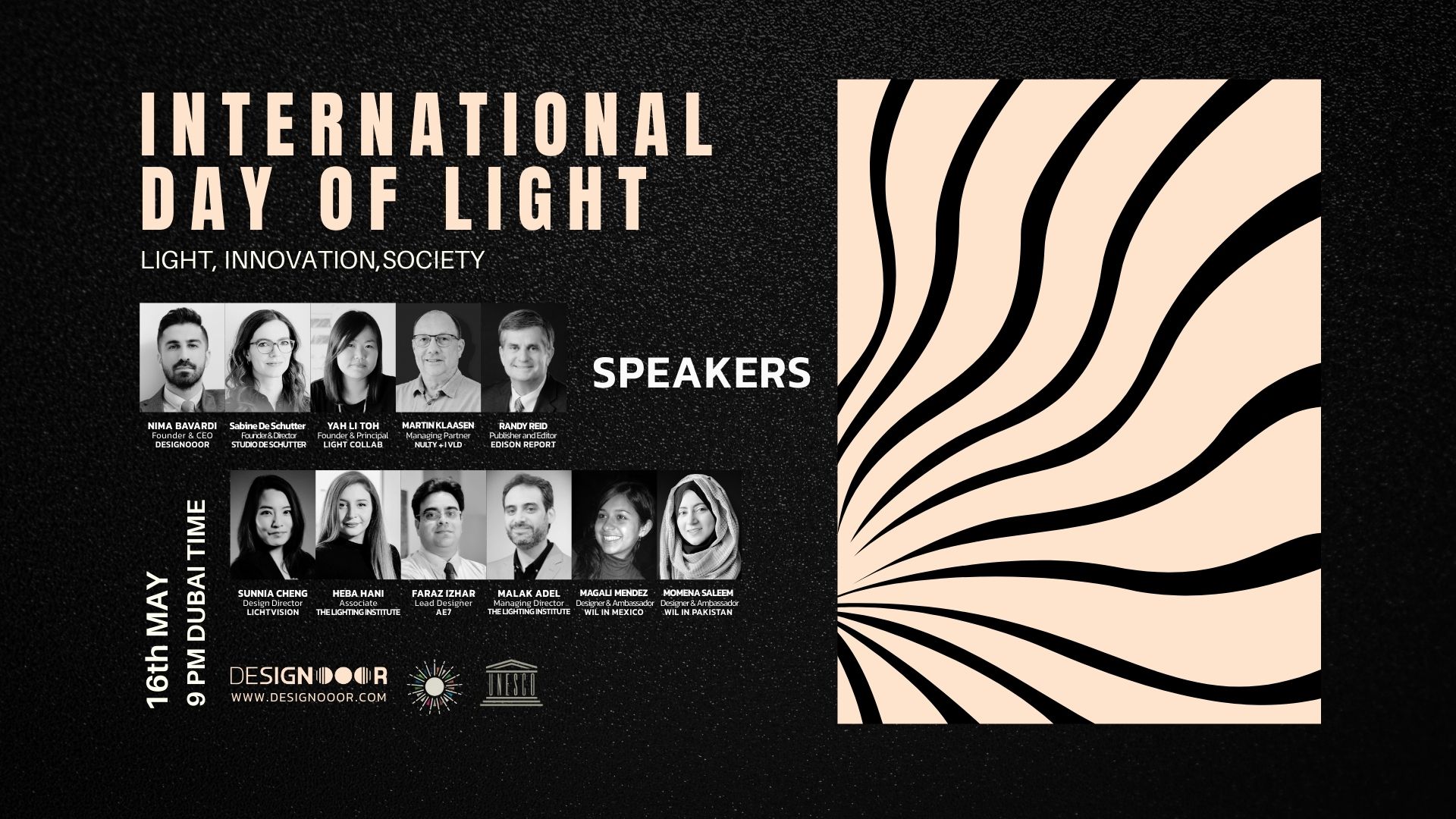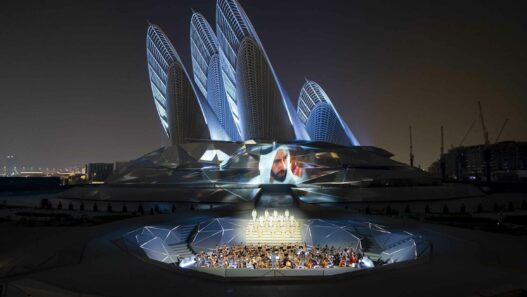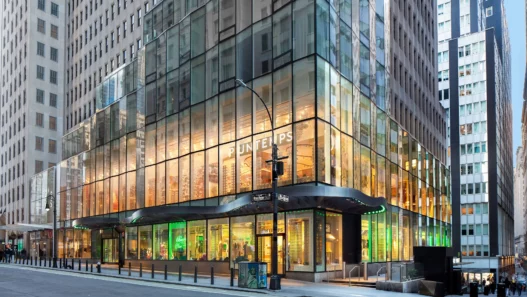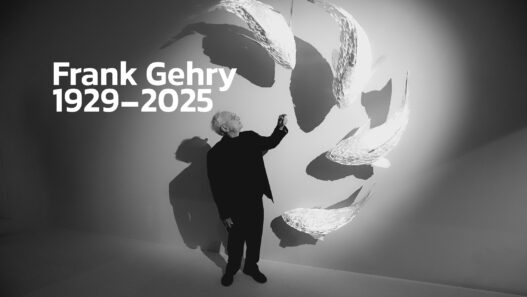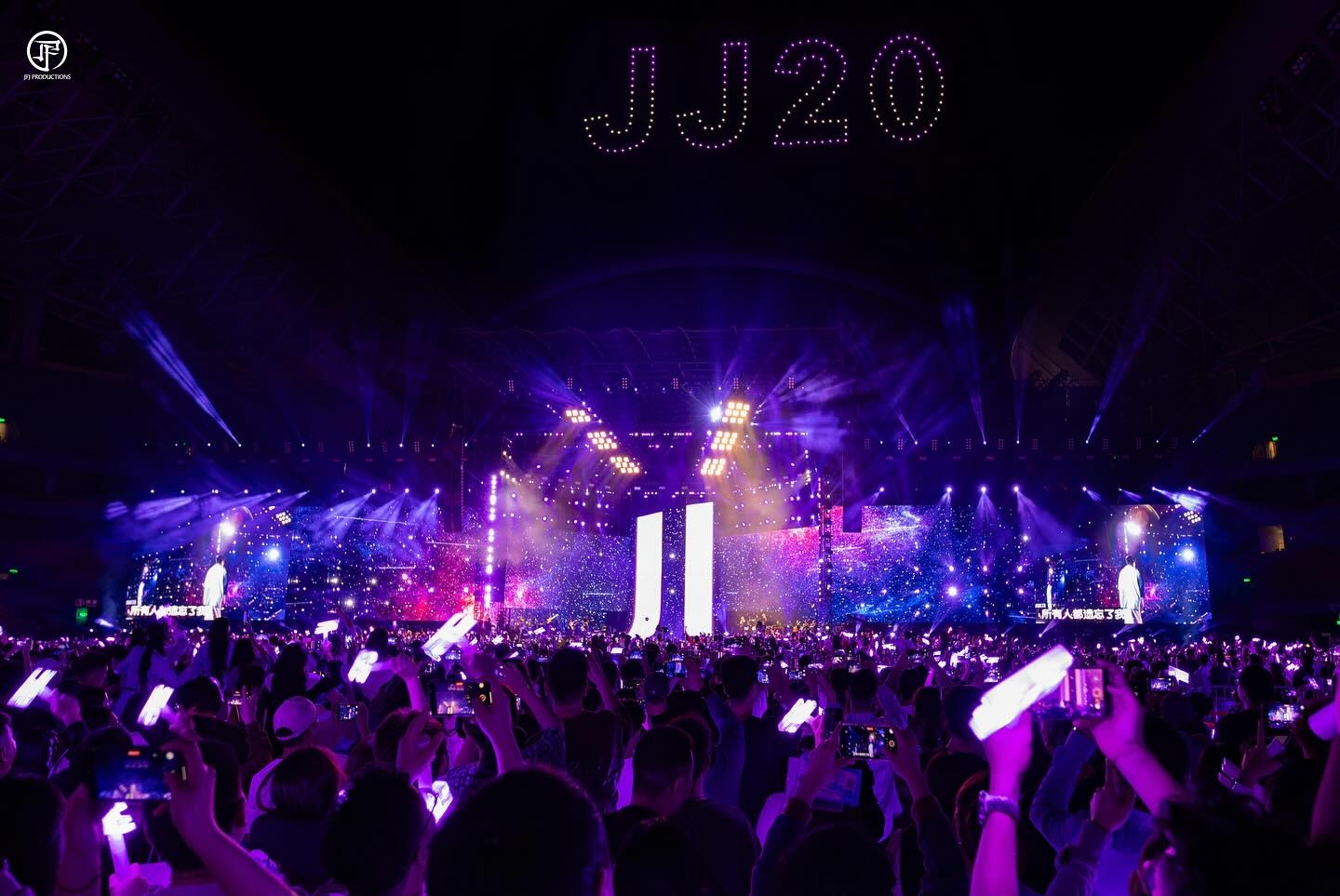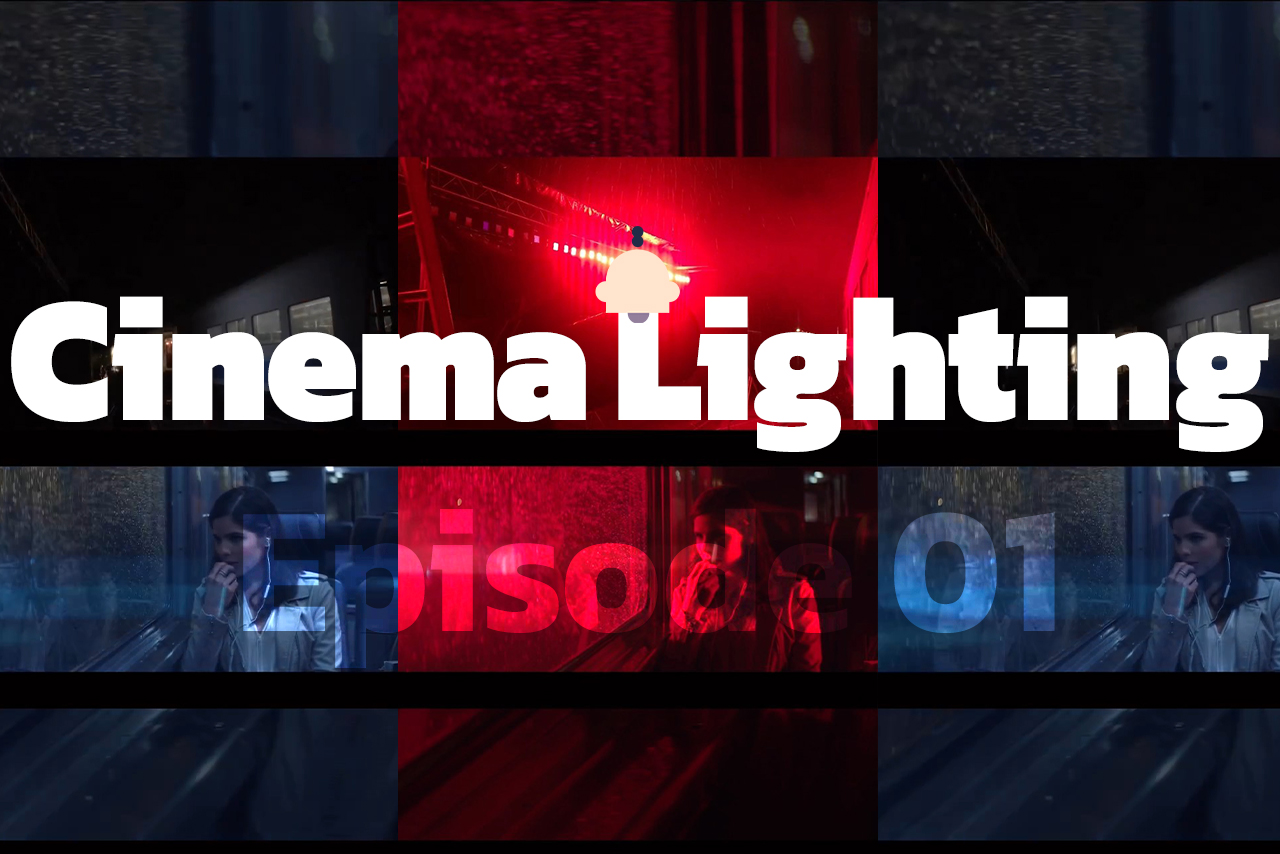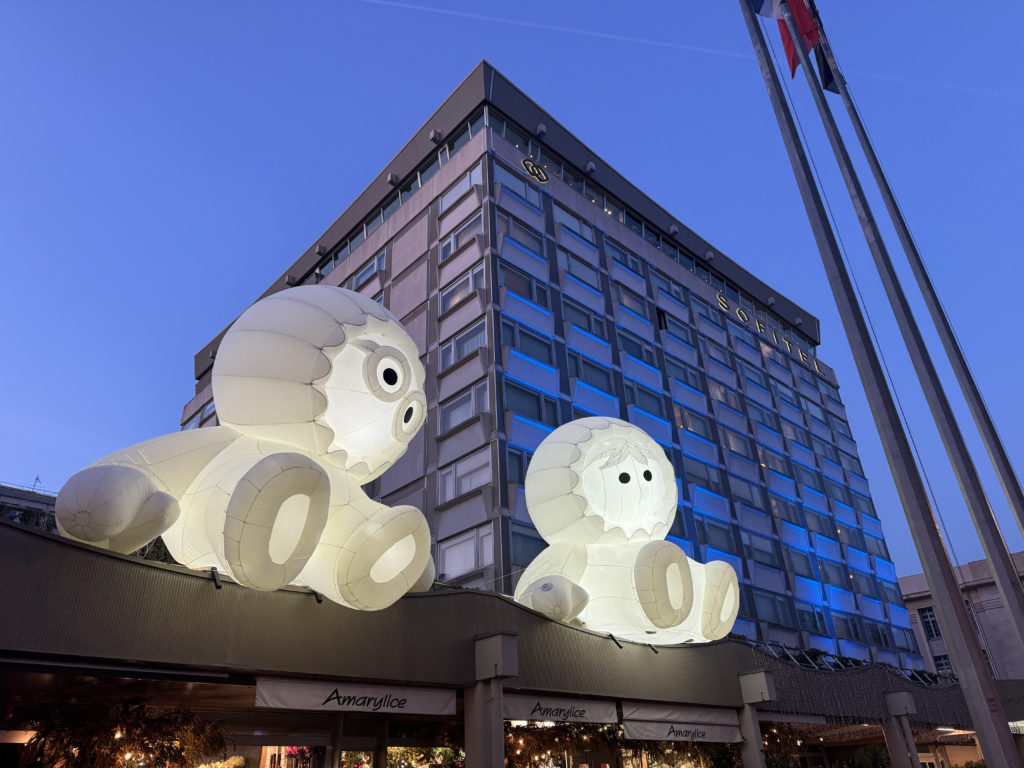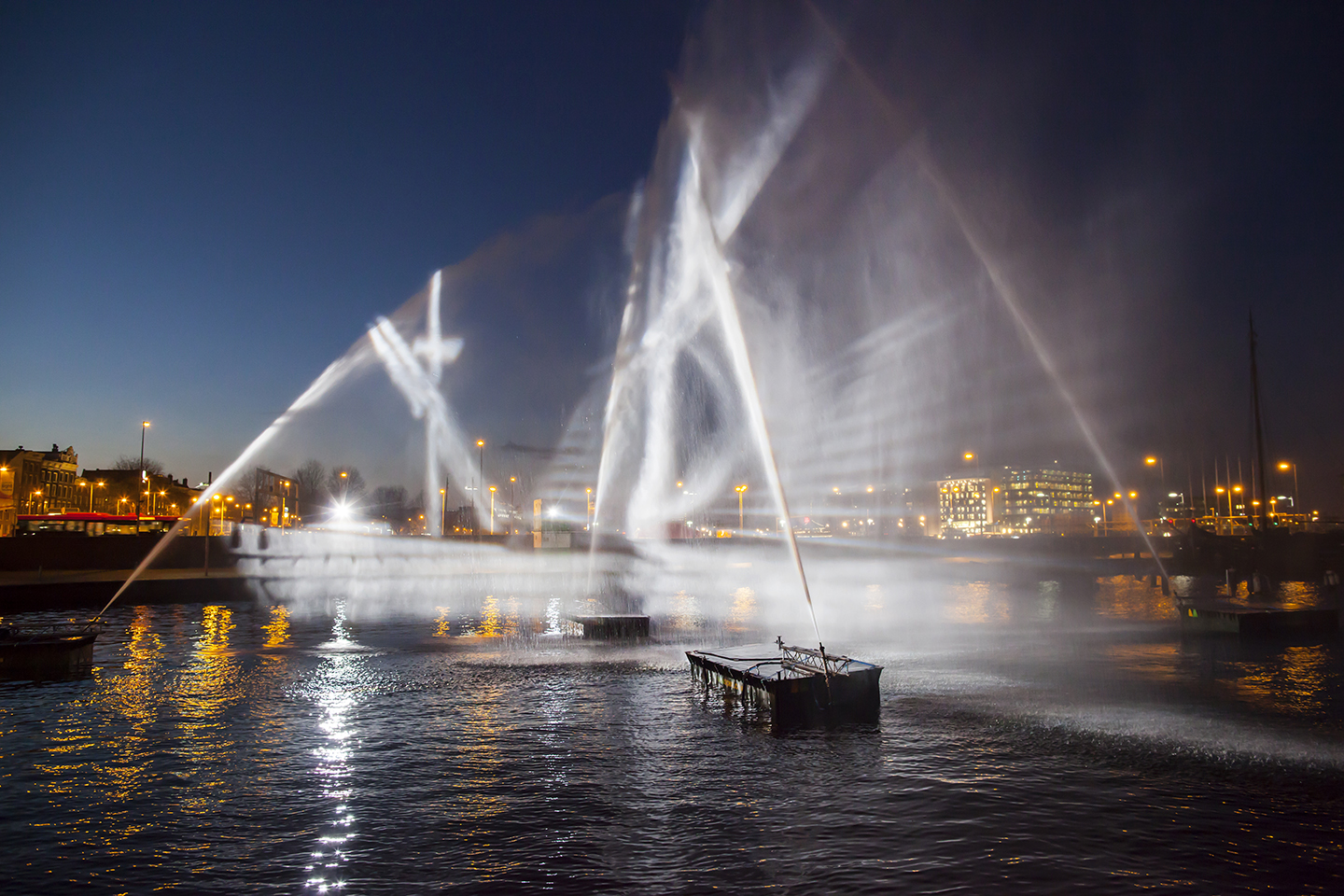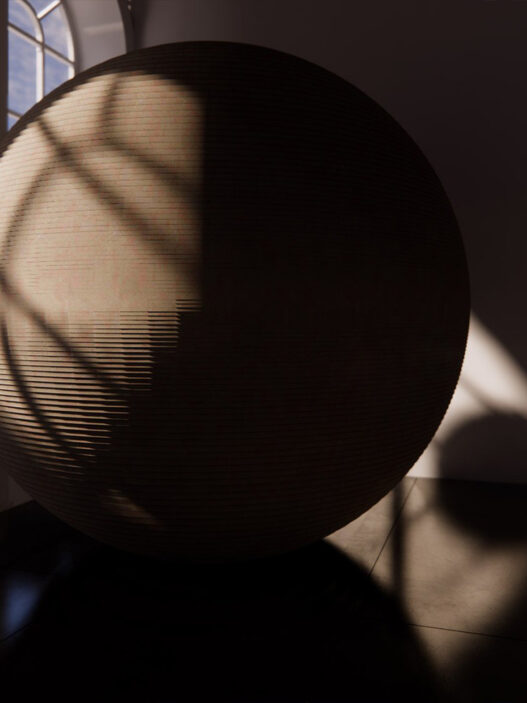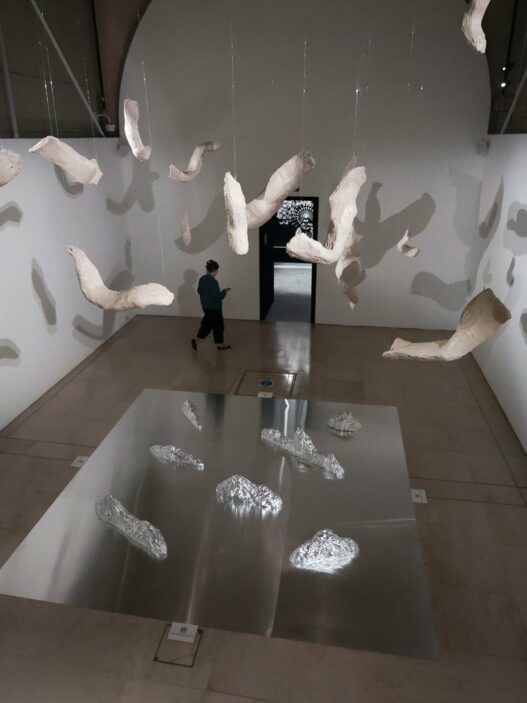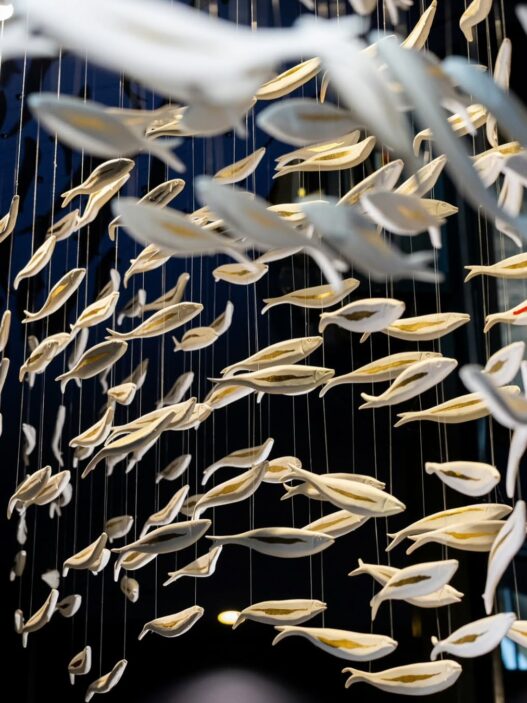Amidst the purple silence that has taken over the raw, industrial space of an abandoned warehouse, light emanates from the ground; not as a light that dispels darkness, but as the hidden language of an electronic spirit trying to enter into a dialogue with the audience. What we witness in this image is not simply a stage lighting, nor is it simply a display of technology, but rather an experience that combines light and sound to immerse the visual and auditory senses in a magnetic field of perception. If I were to link it to an image in art history, it bears an uncanny resemblance to the glowing circles in Kandinsky’s paintings; as if this work had emerged from his theories of sound and color and shed its skin in the digital age.
In terms of function and function, this light installation is more about creating space than about illuminating or defining space; it has turned light into a tool that changes moment by moment with the beats of a drum. The LEDs here are not simply lighting devices, but a dynamic element that interacts with the center of the performer as neural pulses. The ring that radiates from the center forces us to perceive the centrality of the performer not only physically but also psychologically; he has become the pole of a system. However, what sometimes prevents the audience from fully connecting is the repetition of the light pattern in the radial axes, which after a few minutes makes it possible to predict the behavior of the light and reduces its initial magic. This is perhaps the point where there is a need to reconsider the degree of randomness or complexity of the algorithm.
In terms of mechanism and the connection of Gestalt with form, the circular system works well. The centrality of the lighting is in perfect harmony with the musical centrality of the work, and the combination of the two creates a familiar but new image. Circles, while reminiscent of sacred structures and cosmic symbols, have become a means of energy flow here. Although the dynamism of light contrasts with the static nature of the maker and performer, this very contrast nicely creates a dual structure: the immobility of man and the movement of waves. If we were to attribute to it a more precise Formic structure, it has a structural similarity to Tibetan “mandalas” in which the center always has meaning and the periphery is constructed in relation to it.
At the level of stability and the relationship of light to shadow, what most engages the eye is the manner in which shadow is absent. This absence is not due to imperfection, but rather an intelligent choice: in a world where light is endogenous and emanates from the center, shadow no longer has any meaning as an anti-light. Light here is without contradiction, unrivaled. This, while aesthetically pushing the space towards a kind of cold, boundless sanctity, also reduces the possibility of depth. Perhaps this is what makes the three-dimensional space of the performance seem a bit flat, and this is where the lack of shadow, rather than being disruptive, becomes an internal critique of the concept of absolute light.
Finally, if I were to situate this work in the heart of the geography of art from my own perspective, as a designer who has lived with light, I would have to say that this lighting is not about recreating natural light, nor is it about seeking mere technological seduction. What it creates is a “space of passage”; a place between man and data, between sound and form. Its inspiration, if I may be frank, is strikingly similar to the “moment of radiation” of a neutron star, not in a scientific sense, but in the strange sensation it creates: the explosion of the center in the absolute stillness of space. And that’s what makes the work not just visible, but tangible. If you were standing in the center of this circle, directly, at that moment.
Designer : Ksawery Komputery
Drums: Jacek Prościński
Sound Mastering: Maciej Stendek
